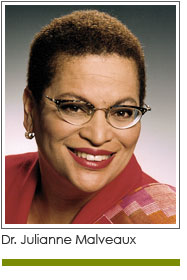 If I had two loaves of bread I would sell one and buy white hyacinths for the soul, wrote the philosopher Eldreth Hubbard. The phrase has always intrigued me because it speaks to the importance of the arts in our lives. It came back to me as I walked the streets of Paris, wonderfully guided by my friend, Ricki Stevenson, who runs Black Paris Tours and is expert at pointing out all manner of things, like the place where Langston Hughes lived, or the place where Josephine Baker first performed. We walked past the statue to Alexander Dumas, and the broken shackled monument to his father, a much decorated general. In soaking in black culture in Paris, I am reminded at how many Black artists fled the United States to come someplace where they could feel freer. Don't get me wrong - there is racism in Paris, too. But back in the day it was a different kind of racism. People could promenade in parks in Paris, while they couldn't be seen in public parks in the United States except in a subservient role. William Wells Brown, one of our first novelist (Clotilde: The President's Daughter) came here and repeatedly asked people where he could go, and was finally told he could go everywhere. That freedom was something he was most unaccustomed to, a freedom that many, including Frederick Douglas and Ida B. Wells, were most unaccustomed to. Paris gave them the freedom to be human, not just slaves and the descendents of slaves.
If I had two loaves of bread I would sell one and buy white hyacinths for the soul, wrote the philosopher Eldreth Hubbard. The phrase has always intrigued me because it speaks to the importance of the arts in our lives. It came back to me as I walked the streets of Paris, wonderfully guided by my friend, Ricki Stevenson, who runs Black Paris Tours and is expert at pointing out all manner of things, like the place where Langston Hughes lived, or the place where Josephine Baker first performed. We walked past the statue to Alexander Dumas, and the broken shackled monument to his father, a much decorated general. In soaking in black culture in Paris, I am reminded at how many Black artists fled the United States to come someplace where they could feel freer. Don't get me wrong - there is racism in Paris, too. But back in the day it was a different kind of racism. People could promenade in parks in Paris, while they couldn't be seen in public parks in the United States except in a subservient role. William Wells Brown, one of our first novelist (Clotilde: The President's Daughter) came here and repeatedly asked people where he could go, and was finally told he could go everywhere. That freedom was something he was most unaccustomed to, a freedom that many, including Frederick Douglas and Ida B. Wells, were most unaccustomed to. Paris gave them the freedom to be human, not just slaves and the descendents of slaves.
The artist Henry Ossawa Tanner (who painted "The Banjo Player" which the Clintons bought for the White House) came here because he wanted to be, simply, a painter, not a black painter. He tackled landscapes, and not much race painting, and was chided by Booker T. Washington for doing so. Tanner also became a patron of American painters, regardless of race, opening his pockets and home to any who asked for help. The questions he grappled with, black or painter or both are those post-racial questions some still grapple with in the age of Obama.
I am stuck on these white hyacinths and the arts because I just learned that the Harlem School of the Arts has closed for lack of funds, and I mourned it. What happens to the arts in a recession? One need only look at some of our schools for an answer. Some of our schools have cut out art and music, arguing that the three R's are more important. Yet, it is important to feed the soul, to nurture the white hyacinths, to ensure that our lives are more than bleak and rudimentary, but enhanced by music and painting and dance. Without having access to budgets (I'm writing from Paris, a last act before jumping on a plane), it just strikes me that the crisis that is challenging our economy might be especially challenging for the arts. The Harlem School of the Arts isn't the only artistic endeavor that is closing or cutting back. Across the country, and especially in budget strapped cities, arts are being given short shrift.
Yet if we hark back to the model of the Great Depression, we must remember that artists were employed by the federal government both as a way of stimulating the economy, and as a way of preserving important aspects of our history. For example, the narratives of former slaves were taken down during the Depression by historians and writers who had a last chance to capture that history. Parenthetically and importantly, not many African Americans were allowed this work. At the same time, it is an example of what we can do when we are committed both to employment and the arts.
This recession has dehumanized many of us, and in so many ways. People write and speak of losing their way, their esteem, and their confidence. Yet we would be all the more deprived were it not for soothing jazz music, colorful paintings, and opportunities to reflect. I both mourn the closing of the Harlem School of the Arts and implore us all to invest in white hyacinths.
Dr. Julianne Malveaux is a noted economist and president of Bennett College for Women.











